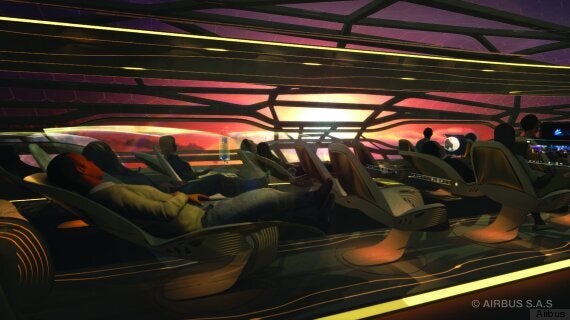Airbus have outlined their vision for the future of air travel - 3D printed planes that are faster, more economical and which can even change shape.
Speaking at Edinburgh's TEDGlobal, the aviation behemoth's designers revealed aconcept plane constructed around a lattice fuselage - an idea that would substantially reduce their weight.
It would also have the bonus of creating a cabin with panoramic views of the skies, rather than a pokey little port hole as in today's planes.

Reclining while watching the sunset from 40,000 feet up
Other innovations include wings that bend and move instead of using flaps, and seats that mould themselves to the individual passenger.
Airbus also suggest seats could harvest energy from passengers, have individual 'floating displays' and even a virtual golf course.
While all this sounds jolly entertaining, the Airbus concept plane does have a serious point to make.
Speaking to the BBC Airbus engineer, Bastian Schaefer, said: "Flying in the future must remain affordable for both people and from an environmental perspective.
"We are running out of oil and we have to find other solutions.
"Some of this can be done via technology, but we are also looking for alternative fuels."
While the promised miracle fuel source of hydrogen fuel cells still remains impractical, Airbus are instead concentrating on biofuels:
Airbus is acting as a catalyst for sustainable biofuels through an ambitious programme to form regional biofuel "value chains" in every continent, using the Roundtable on Sustainable Biofuels criteria to guarantee sustainability. Five such value chains already have been established, in Australia, Brazil, Middle East, Romania and Spain.
While it’s not foreseeable that fuel cells would be used for commercial aircraft propulsion, they are one of the most promising "step change" technologies to power cabin operations. As hydrogen is combined with oxygen in a "cold" combustion, the only by-product is water. This could be used for the aircraft’s water and waste system, saving water, weight and – in turn – fuel consumption and emissions.
Whether or not the concept plane ever makes it into production is debatable - but as a vision for the future it's pretty promising.